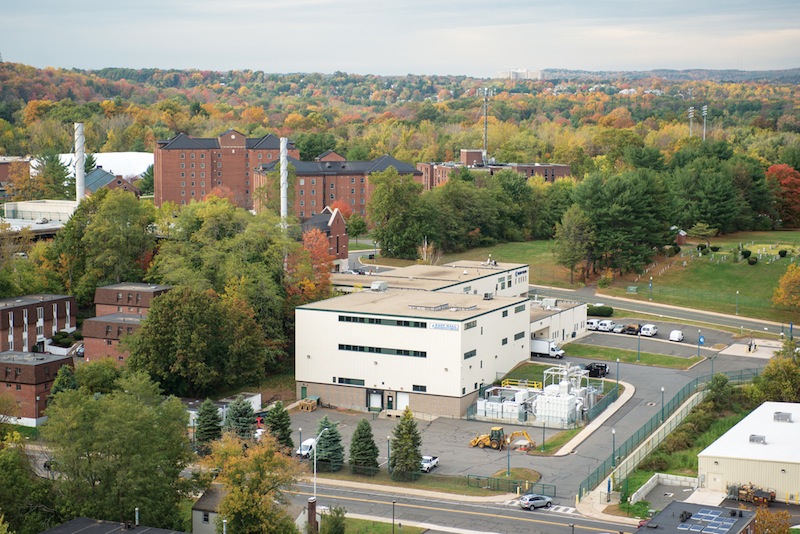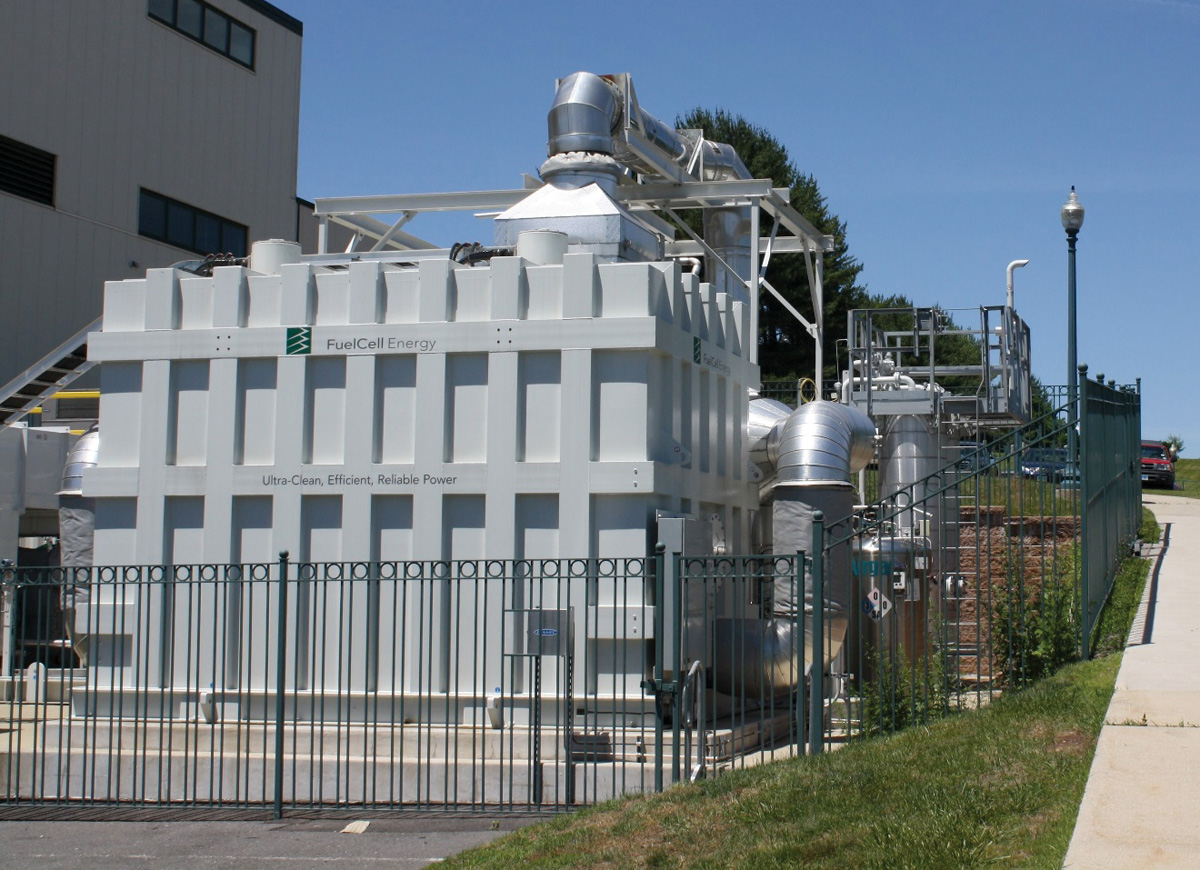Fuel cells have emerged as a small but potentially significant piece of the world’s energy puzzle. The U.S. Department of Energy estimated worldwide fuel cell system sales in 2013 at $1.3 billion, the first time the billion-dollar mark had been topped. Stationary power systems with an aggregate capacity of 150 MW were shipped in 2013, a 24% increase over the previous year.
Selling fuel cell power generation remains a tough business. One leading provider-installer-operator, FuelCell Energy Inc. (www.fuelcellenergy.com), stated in its 2014 annual report that its two biggest challenges to growth are reducing the total cost of fuel cells and getting major energy consumers to see the value that fuel-cell technology offers. The company reported net losses in each of its last five fiscal years.
FuelCell Energy is no Johnny-come-lately to this technology. Founded in 1969, the company has installed more than 100 plants operating at more than 50 sites in nine countries. A year ago, it entered into an agreement to install a 1.4-MW fuel cell plant that will provide about 30% of the power needs for the University of California Irvine Medical Center. Because that power will be generated without combustion, its exhaust will be virtually pollution free.
 The fuel cell contributes to the site’s energy security, resiliency, and sustainability. Photo courtesy FuelCell Energy
The fuel cell contributes to the site’s energy security, resiliency, and sustainability. Photo courtesy FuelCell Energy
Last November, Microsoft dedicated its $7.6 million zero-carbon data center in Cheyenne, Wyo. The facility draws power from a stationary fuel cell plant that converts biogas from a nearby municipal wastewater treatment facility into electricity. Microsoft, FuelCell Energy, and Siemens engineered and installed the power monitoring equipment for the data center.
Eighteen months ago, FuelCell Energy installed one of its 1.4-MW DFC1500 fuel cell power plants at Central Connecticut State University, in New Britain. The plant’s owner, Greenwood Energy, sells electricity and heat to CCSU under a long-term power purchase agreement. This is Greenwood’s first energy project with FuelCell Energy.
The plant integrates directly into the college’s existing energy infrastructure in a combined heat and power configuration. Rob Gagne, CCSU’s Plant Facilities Manager, says that the heat from the fuel cell plant produces 1,600–2,000 pounds of steam per hour. The steam is circulated across the 165-acre campus through a tunnel network and is used for heating and absorption cooling.
The plant provides about one-third of the 3,500–4,000 kw the university’s 40 buildings consume and cuts its annual electric power costs by $100,000.
Related Stories
Green | Jul 8, 2024
Global green building alliance releases guide for $35 trillion investment to achieve net zero, meet global energy transition goals
The international alliance of UK-based Building Research Establishment (BRE), the Green Building Council of Australia (GBCA), the Singapore Green Building Council (SGBC), the U.S. Green Building Council (USGBC), and the Alliance HQE-GBC France developed the guide, Financing Transformation: A Guide to Green Building for Green Bonds and Green Loans, to strengthen global cooperation between the finance and real estate sectors.
Sustainability | Jul 1, 2024
Amazon, JPMorgan Chase among companies collaborating with ILFI to advance carbon verification
Four companies (Amazon, JPMorgan Chase, JLL, and Prologis) are working with the International Living Future Institute to support development of new versions of Zero Carbon Certification.
Sustainability | Jun 24, 2024
CBRE to use Climate X platform to help clients calculate climate-related risks
CBRE will use risk analysis platform Climate X to provide climate risk data to commercial renters and property owners. The agreement will help clients calculate climate-related risks and return on investments for retrofits or acquisitions that can boost resiliency.
Building Technology | Jun 18, 2024
Could ‘smart’ building facades heat and cool buildings?
A promising research project looks at the possibilities for thermoelectric systems to thermally condition buildings, writes Mahsa Farid Mohajer, Sustainable Building Analyst with Stantec.
University Buildings | Jun 18, 2024
UC Riverside’s new School of Medicine building supports team-based learning, showcases passive design strategies
The University of California, Riverside, School of Medicine has opened the 94,576-sf, five-floor Education Building II (EDII). Created by the design-build team of CO Architects and Hensel Phelps, the medical school’s new home supports team-based student learning, offers social spaces, and provides departmental offices for faculty and staff.
Codes and Standards | Jun 17, 2024
Federal government releases national definition of a zero emissions building
The U.S. Department of Energy has released a new national definition of a zero emissions building. The definition is intended to provide industry guidance to support new and existing commercial and residential buildings to move towards zero emissions across the entire building sector, DOE says.
Green | Jun 11, 2024
Tool helps construction and renovation projects with CalGreen compliance
One Click LCA recently launched a new software tool to help building teams comply with Part 11, Title 24, of the California Code of Regulations—CALGreen. The regulation is the nation’s first state-mandated green building code to include embodied carbon emission control as a mandatory component, effective from July 1, 2024.
Mass Timber | May 31, 2024
Mass timber a big part of Western Washington University’s net-zero ambitions
Western Washington University, in Bellingham, Wash., 90 miles from Seattle, is in the process of expanding its ABET-accredited programs for electrical engineering, computer engineering and science, and energy science. As part of that process, the university is building Kaiser Borsari Hall, the 54,000-sf new home for those academic disciplines that will include teaching labs, research labs, classrooms, collaborative spaces, and administrative offices.
MFPRO+ New Projects | May 29, 2024
Two San Francisco multifamily high rises install onsite water recycling systems
Two high-rise apartment buildings in San Francisco have installed onsite water recycling systems that will reuse a total of 3.9 million gallons of wastewater annually. The recycled water will be used for toilet flushing, cooling towers, and landscape irrigation to significantly reduce water usage in both buildings.
MFPRO+ News | May 28, 2024
ENERGY STAR NextGen Certification for New Homes and Apartments launched
The U.S. Environmental Protection Agency recently launched ENERGY STAR NextGen Certified Homes and Apartments, a voluntary certification program for new residential buildings. The program will increase national energy and emissions savings by accelerating the building industry’s adoption of advanced, energy-efficient technologies, according to an EPA news release.

















